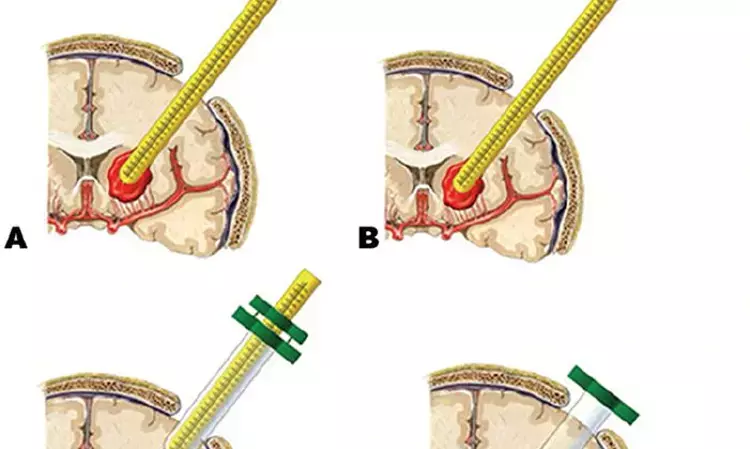- Home
- Medical news & Guidelines
- Anesthesiology
- Cardiology and CTVS
- Critical Care
- Dentistry
- Dermatology
- Diabetes and Endocrinology
- ENT
- Gastroenterology
- Medicine
- Nephrology
- Neurology
- Obstretics-Gynaecology
- Oncology
- Ophthalmology
- Orthopaedics
- Pediatrics-Neonatology
- Psychiatry
- Pulmonology
- Radiology
- Surgery
- Urology
- Laboratory Medicine
- Diet
- Nursing
- Paramedical
- Physiotherapy
- Health news
- Fact Check
- Bone Health Fact Check
- Brain Health Fact Check
- Cancer Related Fact Check
- Child Care Fact Check
- Dental and oral health fact check
- Diabetes and metabolic health fact check
- Diet and Nutrition Fact Check
- Eye and ENT Care Fact Check
- Fitness fact check
- Gut health fact check
- Heart health fact check
- Kidney health fact check
- Medical education fact check
- Men's health fact check
- Respiratory fact check
- Skin and hair care fact check
- Vaccine and Immunization fact check
- Women's health fact check
- AYUSH
- State News
- Andaman and Nicobar Islands
- Andhra Pradesh
- Arunachal Pradesh
- Assam
- Bihar
- Chandigarh
- Chattisgarh
- Dadra and Nagar Haveli
- Daman and Diu
- Delhi
- Goa
- Gujarat
- Haryana
- Himachal Pradesh
- Jammu & Kashmir
- Jharkhand
- Karnataka
- Kerala
- Ladakh
- Lakshadweep
- Madhya Pradesh
- Maharashtra
- Manipur
- Meghalaya
- Mizoram
- Nagaland
- Odisha
- Puducherry
- Punjab
- Rajasthan
- Sikkim
- Tamil Nadu
- Telangana
- Tripura
- Uttar Pradesh
- Uttrakhand
- West Bengal
- Medical Education
- Industry
Endoscopic evacuation of Massive Intraventricular Haemorrhage reduces Shunt Dependency

A recent meta-analysis published in the Asian Journal of Neurosurgery shows that neuroendoscopic evacuation (NE) of intraventricular hemorrhage (IVH) leads to significantly lower rebates of shunt dependency, as compared to the standard emergency treatment using an external ventricular drainage system (EVD).
Intraventricular hemorrhage (IVH), primary or secondary to intracerebral haemorrhage (ICH) and subarachnoid haemorrhage (SAH), is commonly recognized as a poor prognostic factor, with an estimated mortality of 50 to 80% and less than 40% of patient alive at 1-year follow-up. The ever-increasing use of anticoagulant and antithrombotic drugs worsens the prognosis, especially in elderly patients. Together with neurological status at admission, the amount of intraventricular blood is the main prognostic factor, as it causes multiple noxious effects: impairment of cerebrospinal fluid (CSF) circulation, intracranial hypertension, and acute or delayed hydrocephalus.
As an emergency procedure, external ventricular drain (EVD) placement is the standard management. Blood clots, however, hinder the proper functioning of the EVD, and the physiopathology of IVH-related damage is not resolved anyway. However, particularly in the presence of large quantities of blood, different authors adopted neuroendoscopy (NE) as more aggressive treatment to evacuate IVH, advocating a rapid removal of intraventricular clots with an immediate resolution of intracranial hypertension and, consequently, substantial advantage on both short- and long-term prognosis over EVD.
NE procedures allow to rapidly and totally restore CSF dynamic if also the fourth ventricle is freed from blood clots. The use of the flexible endoscope, reaching deeper ventricles region than the rigid one, could potentially bring greater benefit.
Fiorindi et al conducted a meta-analysis using RCTs and retrospective studies and analysed the data to directly compare the results of NE and EVD in the setting of IVH treatment. They found that NE evacuation of IVH led to a significantly lower shunt-dependency rate. Moreover, shorter catheter duration and fewer cases of infection were reported in the NE group. The overall outcome remained poor for patients with IVH, with a moderate-to-high disability compared to the NE and EVD in relation to shunt dependency and complications.
They found that even though there is a substantial lacking of standardised data and hence major evidence is needed to support the use of NE procedure in the evacuation of intraventricular hematoma, the posthemorrhagic shunt-dependency rate is significantly lower in the NE group than in the EVD group.
Regarding the potential complications of IVH surgery, the postsurgical meningitis related to a ventricular device placement is one of the most severe ones with an estimated mortality of approximately 30%. In this setting, NE could provide serious benefits lowering the infection rate because of a potential reduction in the EVD length of stay.
They conclude that new advances in IVH treatment with endoscope could cause deeper differences between classical EVD techniques and NE ones. However, large randomized controlled trials are needed to evaluate effects on the outcome. Moreover, the potentially higher advantage of flexible endoscope technology needs to be investigated.
Reference: Endoscopic Evacuation of Massive Intraventricular Hemorrhages Reduces Shunt Dependency: A Meta-Analysis
Alessandro Fiorindi , Giorgio Saraceno , Luca Zanin , Lodovico Terzi di Bergamo , Alberto Feletti , Francesco Doglietto , Marco Maria Fontanella
Asian J Neurosurg 2022; 17(04): 541-546
DOI: 10.1055/s-0042-1757220
MBBS, DrNB Neurosurgery
Krishna Shah, MBBS, DrNB Neurosurgery. She did her MBBS from GMC, Jamnagar, and there after did direct 6 Year DrNB Neurosurgery from Sir Ganga Ram Hospital, Delhi. Her interests lie in Brain and Spine surgery, Neurological disorders, minimally invasive surgeries, Endoscopic brain and spine procedures, as well as research.
Dr Kamal Kant Kohli-MBBS, DTCD- a chest specialist with more than 30 years of practice and a flair for writing clinical articles, Dr Kamal Kant Kohli joined Medical Dialogues as a Chief Editor of Medical News. Besides writing articles, as an editor, he proofreads and verifies all the medical content published on Medical Dialogues including those coming from journals, studies,medical conferences,guidelines etc. Email: drkohli@medicaldialogues.in. Contact no. 011-43720751


